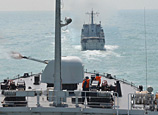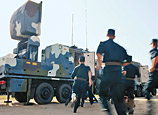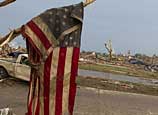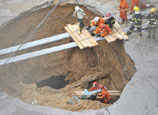
LONG BEACH, California, May 21 (Xinhua) -- The three-day U.S. Space Tech Conference and Expo kicked off at the Long Beach Convention Center in California on Tuesday with focuses on the future of commercial space flight.
The debut of Lynx, the piloted two-seat reusable spacecraft developed by XCOR Aerospace attracted the attention of many visitors who have been keen on the arrival of the age of space tourism.
The aircraft-like Lynx vehicle is designed to take people and payloads on a 30-minute suborbital flight up to at least 100 km and then return safely to a horizontal landing on the take-off runway.
Lynx will allow high tempo operations, including up to four flights per day, rapid call-up (ready to fly in two hours), and fast turnaround between flights.
"We made a commitment to display our Lynx Spacecraft for the first time in full scale in the United States here and it's turned out wonderfully...we had a lot of activity, a lot of great people, a lot of good questions and some very good business contacts," said Andrew Nelson, chief operating officer of XCOR Aerospace.
Geoffrey Licciardello from XCOR Aerospace told Xinhua the spacecraft on show is just a replica, but he said the real spacecraft will be ready for test fly later this year.
He said it will be the first time a spacecraft would fly for tourists. Since it could carry some equipment on the flight, it will be widely used for experiment and even for the launch of small space objects.
According to Licciardello, the first commercial launch would be made possibly in 2014 and several hundred people are on the waiting list right now.
He disclosed that the ticket for a single space flight is only about 95,000 U.S. dollars, and the total flight time would be 30 minutes but the microgravity environment only lasts about 4.6 minutes at apogee 100 km.
According to Licciardello, the spacecraft can be launched at any place and return at any commercial airports with long runways.
John Palmer from the California Space Enterprise Center is one of the engineers who have designed the spacecraft.
He also showed a new space suit for tourists to wear for the suborbital spacecraft flight.
He said the space suit designed and manufactured by private sectors is much cheaper, only one fifth of the cost the National Aeronautics and Space Administration (NASA) used to manufacture for space shuttles.
According to Palmer, private space enterprises can play a more active role than NASA since they are usually more effective and cost-saving.
The future of U.S. space transportation and NASA's role are among the hot topics for the current Space Tech Conference.
"With NASA focused on deep space missions, private U.S. companies are likely to operate most flights between Earth and the International Space Station, promising to save NASA money and bring millions of dollars to American enterprises," said Guy Harris, conference director of Space Tech Expo.
Officials from NASA, Boeing, United Launch Alliance, SpaceX, Sierra Nevada Corporation, and the Commercial Space Flight Federation will also reveal new developments in the commercial space crew and cargo arena at the conference.
They will address challenges and opportunities in space commercialization, commercial crew and cargo, space tourism, space launch systems, space funding, technology transfer, International Space Station utilization, military requirements, and supply chain and acquisition considerations.
NASA representatives discussed the role of its Space Launch System (SLS).
As NASA continues its role of advancing the frontier, the SLS will provide a unique national capability to enable future exploration goals, offering reduced mission time, increased mass margins, reduced spacecraft complexity, and increased payload volume, according to NASA.
The benefits of exploration are many: scientific knowledge, technological advancements, economic expansion, public excitement, and national security, according to NASA.
As the conference focuses on hot issue discussions, the exhibit hall features latest products, technologies and innovations from over 140 companies and organizations.
















 Steel roses: woman police in training
Steel roses: woman police in training


![]()
